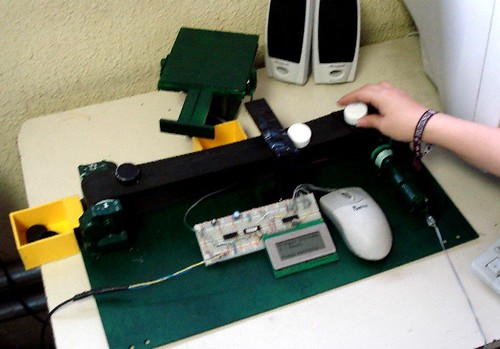Data Acquisition Course Presentation
UPIICSA - IPN
Computer Engineering and Electronics Control Lab
1 Presentation 2 Introduction to systems acquisition
data
3 Basics
instrumentation
4 Using a virtual lab
5 Sensors and Transducers
6 Parallel port (Centronics port or printer port)
7 Solving a problem of implementation with sensors and the parallel port
8 Operational Amplifiers I
Operational Amplifiers II
9
10 passive and active filters
11 analog converters - digital (ADC) I
12 analog converters - digital (ADC) II
13 Application of ADC, temperature sensor and the parallel port
Saturday, August 18, 2007
Wednesday, August 15, 2007
Hair Bleach Skin Finger White
Major: Computer Engineering
Semester: 4th
PURPOSE OF THE SUBJECT
Apply the basics of industrial instrumentation, methods for conditioning electrical signals and methodologies for the use of sensors, transducers, converters a / d and d / a, and microcontrollers, the implementation of data acquisition systems. INTRODUCTION
man has always been nature acquiring data for decision making: the ambient temperature, the direction wind, the volume of water from a reservoir, is commonplace. Do not say in the task of transforming the environment, or build better rooms, furniture manufacturing, food production, particularly in industrial work in the areas of chemistry, medicine, industrial process control etc.. .
Currently, the use of computers and microprocessors with sophisticated techniques of digital signal processing has applications in all areas of measurement, instrumentation, process control, and analysis of physical variables. The digital effort is favored for many reasons, among which high immunity noise, ease of data storage, and the relative ease of data transmission. Additionally, there are many algorithms for processing digital data, providing efficient data analysis. Generally a data acquisition system can be composed of the following items.
- Sensors
- Operational Amplifiers Multiplexers Isolators
- Sample and Hold Circuits
- AD Converters.
- DA converters.
- Microprocessors.
- Accountants.
- Filters.

Subscribe to:
Posts (Atom)
